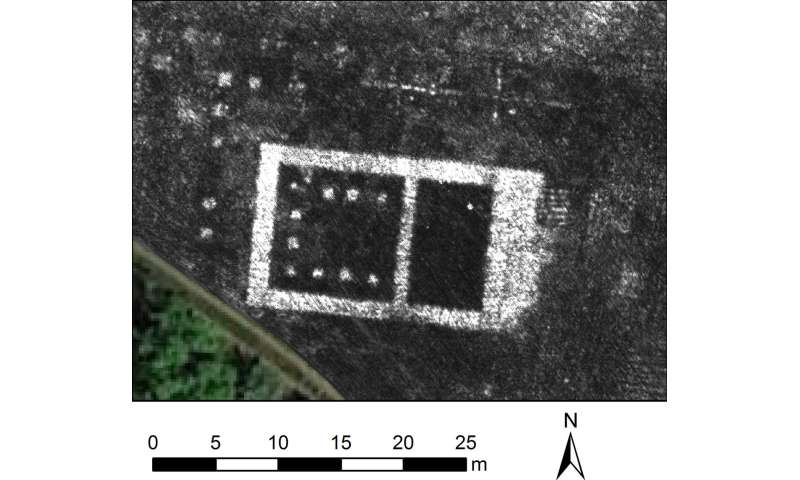Roman City Underground:https://phys.org/news/2020-06-entire-roman-city-revealed.html
Entire Roman city revealed without any digging
by University of Cambridge

For the first time, archeologists have succeeded in mapping a complete Roman city, Falerii Novi in Italy, using advanced ground penetrating radar (GPR), allowing them to reveal astonishing details while it remains deep underground. The technology could revolutionize our understanding of ancient settlements.
The team, from the University of Cambridge and Ghent University, has discovered a bath complex, market, temple, a public monument unlike anything seen before, and even the city’s sprawling network of water pipes. By looking at different depths, the archeologists can now study how the town evolved over hundreds of years.
The research, published today in Antiquity, harnessed recent advances in GPR technology which make it possible to explore larger areas in higher resolution than ever before. This is likely to have major implications for the study of ancient cities because many cannot be excavated either because they are too large, or because they are trapped under modern structures.
GPR works like regular radar, bouncing radio waves off objects and using the ‘echo’ to build up a picture at different depths.* By towing their GPR instruments behind a quad bike, the archeologists surveyed all 30.5 hectares within the city’s walls—Falerii Novi was just under half the size of Pompeii—taking a reading every 12.5cm.
Located 50 km north of Rome and first occupied in 241 BC, Falerii Novi survived into the medieval period (until around AD 700). The team’s GPR data can now start to reveal some of the physical changes experienced by the city in this time. They have already found evidence of stone robbing.
The study also challenges certain assumptions about Roman urban design, showing that Falerii Novi’s layout was less standardized than many other well-studied towns, like Pompeii. The temple, market building and bath complex discovered by the team are also more architecturally elaborate than would usually be expected in a small city.
In a southern district, just within the city’s walls, GPR revealed a large rectangular building connected to a series of water pipes which lead to the aqueduct. Remarkably, these pipes can be traced across much of Falerii Novi, running beneath its insulae (city blocks), and not just along its streets, as might normally be expected. The team believes that this structure was an open-air natatio or pool, forming part of a substantial public bathing complex….see link